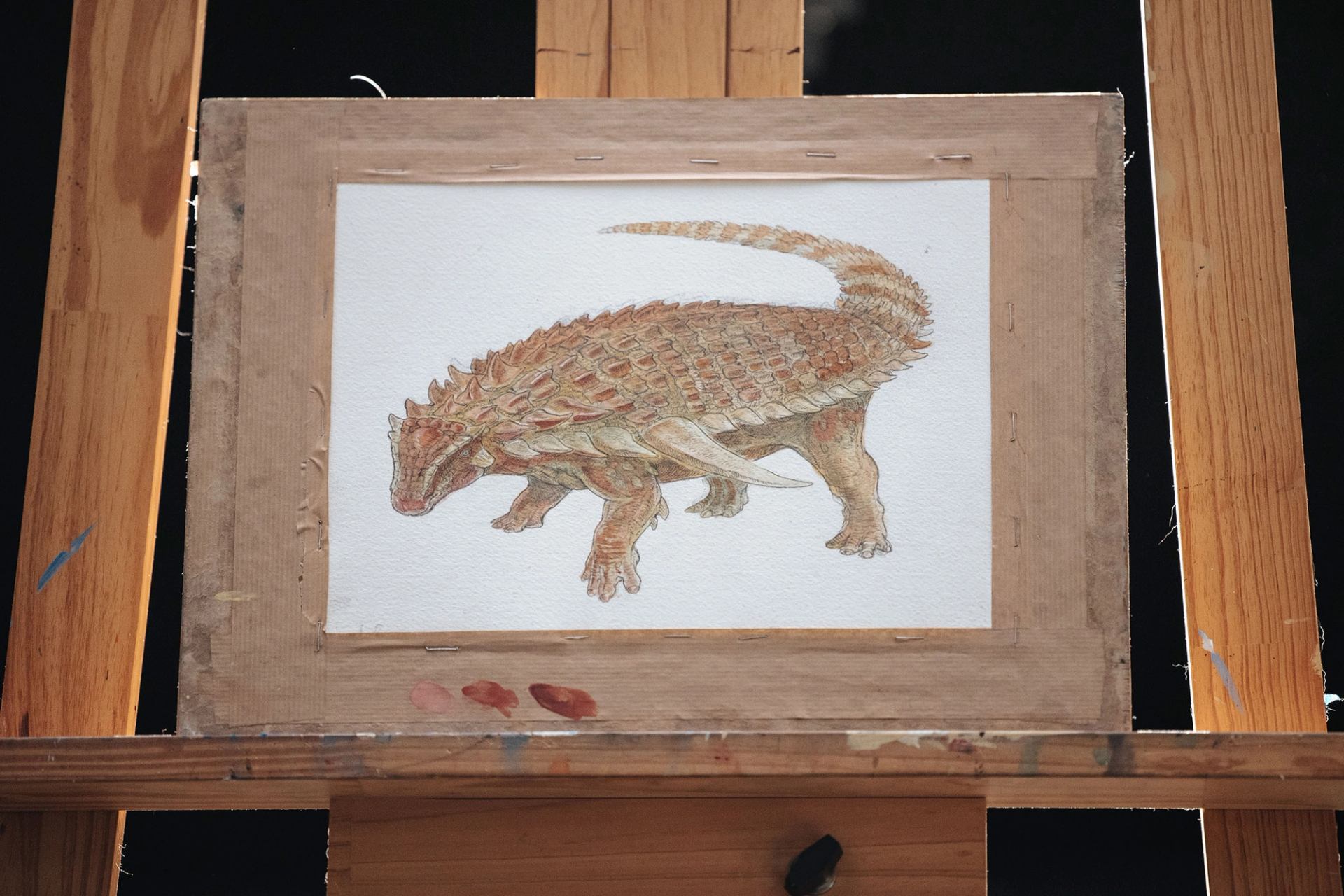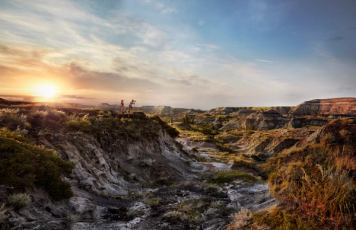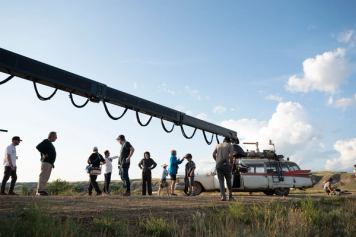The Royal Tyrrell Museum in Drumheller houses one of the best fossil collections in the world, including five specimens that are Guinness World Record holders. Even better? You can see three of them on display at the museum year-round, including the largest marine reptile, the most complete tyrannosaurid skeleton and the best-preserved armoured dinosaur in the world. Keep reading to get to know the Royal Tyrrell Museum’s famous residents.
Check Out These Five Guinness World Record Alberta Dinosaur Fossils
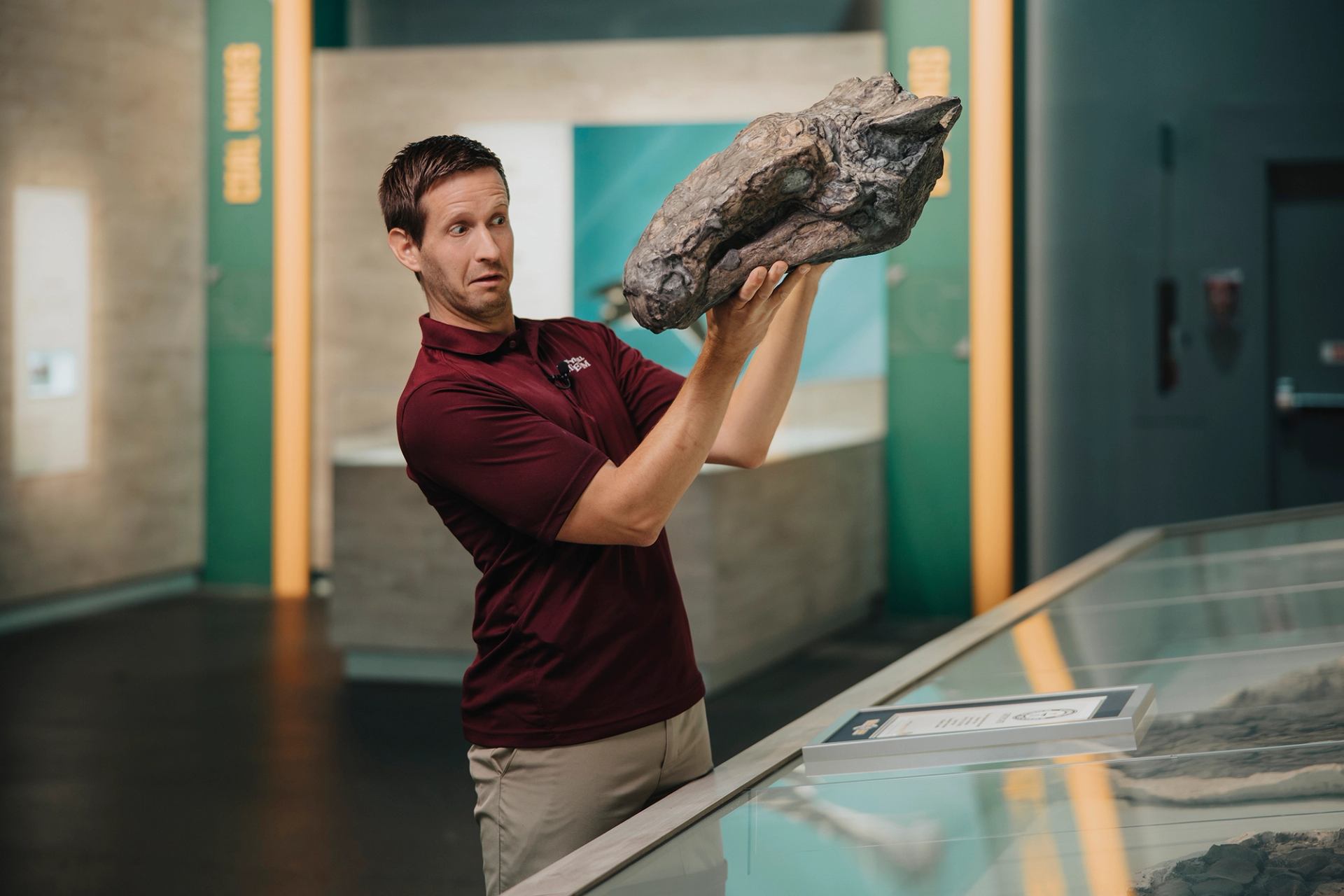
Reading time: 4 minutes
You don’t need to go to the movies to have a celebrity dinosaur experience in Alberta. The Royal Tyrrell Museum in Drumheller is home to several famous dinosaur fossils, which will delight dino-lovers of all ages.
- Drumheller’s Royal Tyrrell Museum has thousands of dinosaur fossils.
- Five specimens at the Tyrrell are Guinness World Record holders.
- These record-holding dinosaur bones are unique in the world.
Shonisaurus sikanniensis
Record: Largest marine reptile ever found
Technically, Shonisaurus isn’t a dinosaur. It’s an ichthyosaur, a cousin of the dinosaurs that lived in the ocean. The Shonisaurus lived in the Late Triassic period (about 220 million years ago) and measured 21 m (69 ft) long. That’s longer than the average bowling lane.

The Royal Tyrrell Museum’s Shonisaurus was discovered in the Canadian Rockies along the Sikanni Chief River in northeastern British Columbia. This fossil was excavated between 1999 and 2001. The crew only had a few weeks each summer to work on the extraction, which was very difficult due to the remote location and the fossil’s massive size. Pieces of the skeleton were washed away by the river prior to its discovery, but the crew was able to unearth a partial skull and many parts of the creature’s body.
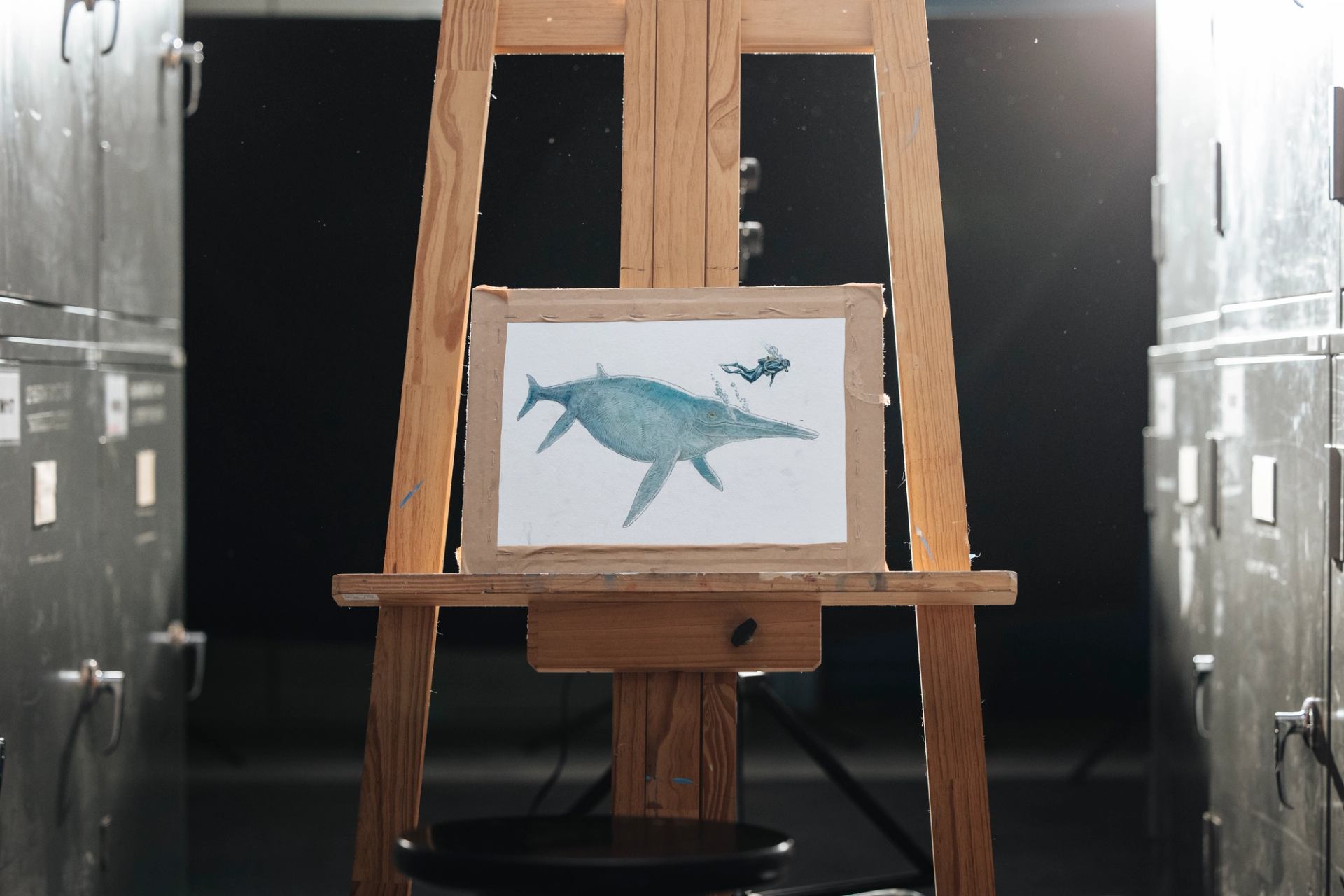
Albertonectes vanderveldei
Record: The longest-necked animal ever (based on the number of neck vertebrae)
Albertonectes reigns supreme when it comes to neck length, with a record 76 neck vertebrae. In comparison, a giraffe only has seven. The full specimen at the Royal Tyrrell Museum measures 12 m (39 ft) long, and Albertonectes’ neck is more than half the length of its body.
Albertonectes was a member of the marine-dwelling plesiosaur family. It lived during the Cretaceous period and spent its life in the ocean. The area that is now Alberta, Saskatchewan and Manitoba would have been surrounded by ocean at the time that Albertonectes lived.
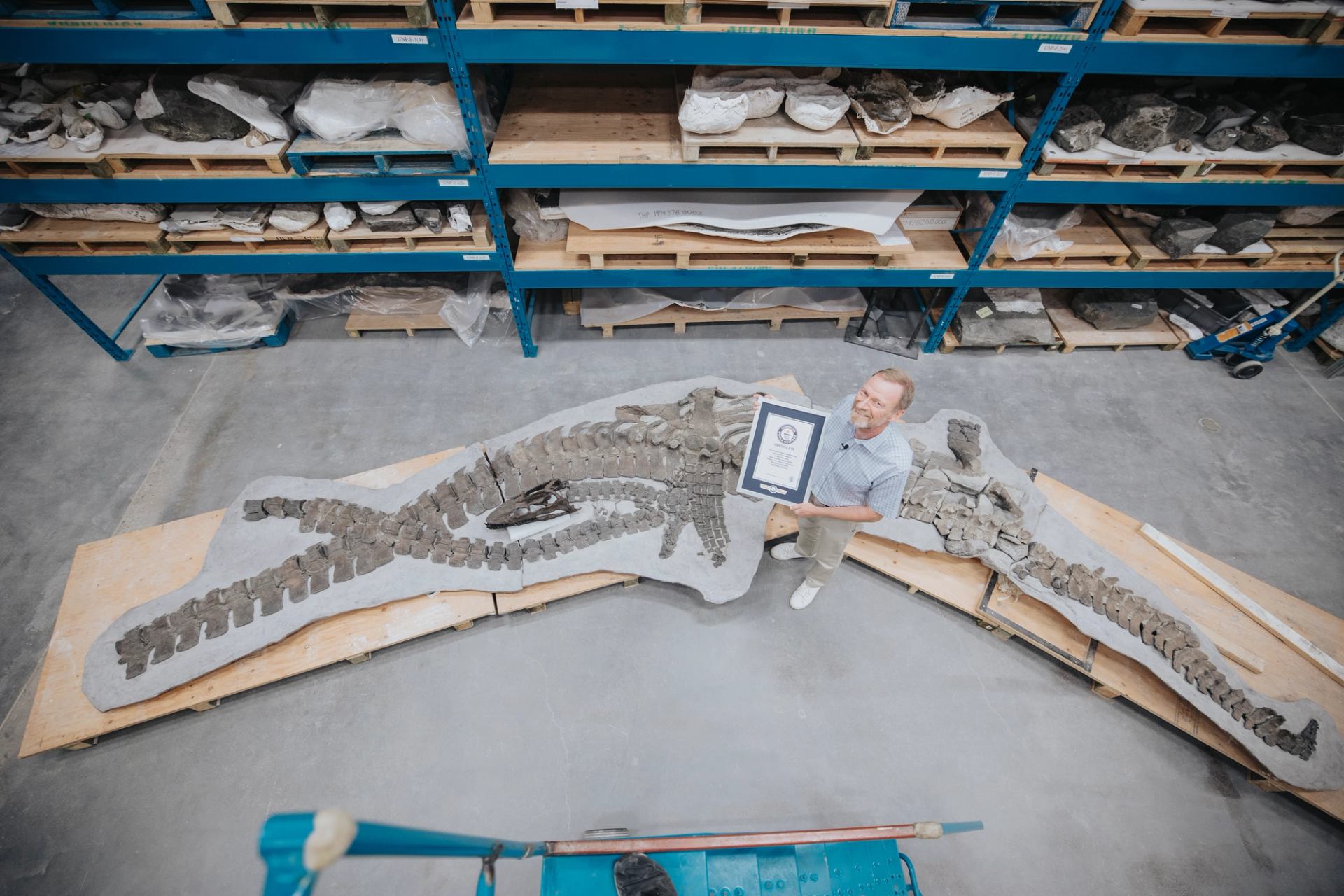
The Royal Tyrrell’s specimen was found at an ammolite mine in southern Alberta in 2007. It took three weeks to unearth the entire thing – plus another year-and-a-half to prepare the skeleton. During that time, the Royal Tyrrell Museum team discovered some interesting facts about Albertonectes, like the presence of gastroliths – aka stomach stones. No one is sure what the stones were used for, but it’s believed they may have helped stabilize the behemoth when it reached the surface of the water.
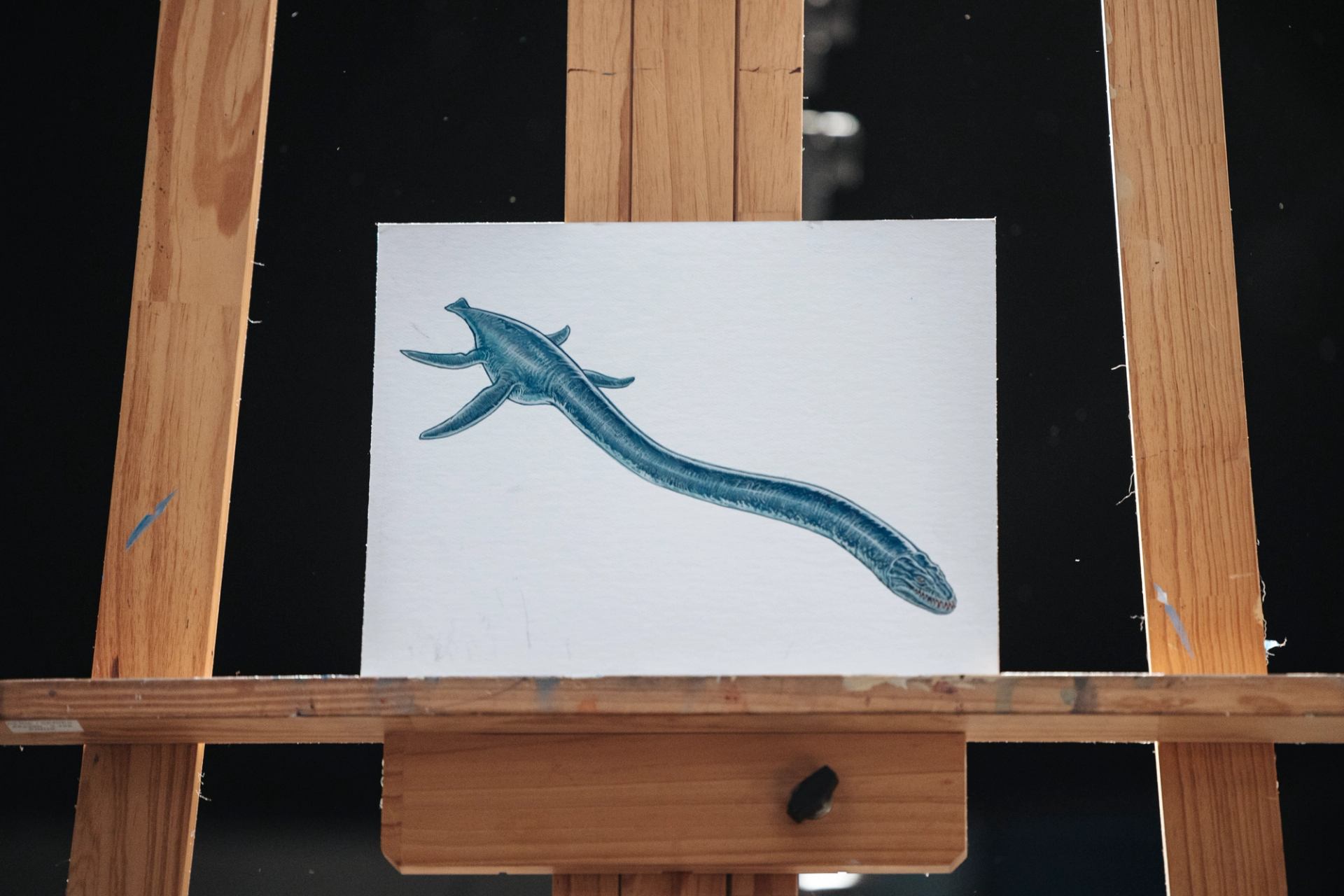
Gorgosaurus libratus
Record: The most complete tyrannosaurid skeleton ever found
Think of Gorgosaurus libratus as the smaller, earlier cousin of the infamous Tyrannosaurus rex, which it pre-dated by nearly 10 million years. The Gorgosaurus skeleton at the Royal Tyrrell Museum is exceptionally rare because it’s nearly intact – this one is only missing some ribs and its left arm. The condition of the skeleton means the animal was likely buried quickly after its death and it wasn’t found by scavengers. It is immortalized in what’s known as the “death pose” due to its neck being curved backwards and its limbs appearing tucked into its body. It’s thought that this Gorgosaurus ended up in a river after it died, which caused it to decompose and contract into this pose and also remain well-preserved.

This particular Gorgosaurus would have been roughly 11 years old when it died. It measures 5.5 m (18 ft) long, but a fully grown adult would have been nine meters (30 ft) long. It was discovered by the Royal Tyrrell Museum team in Dinosaur Provincial Park.
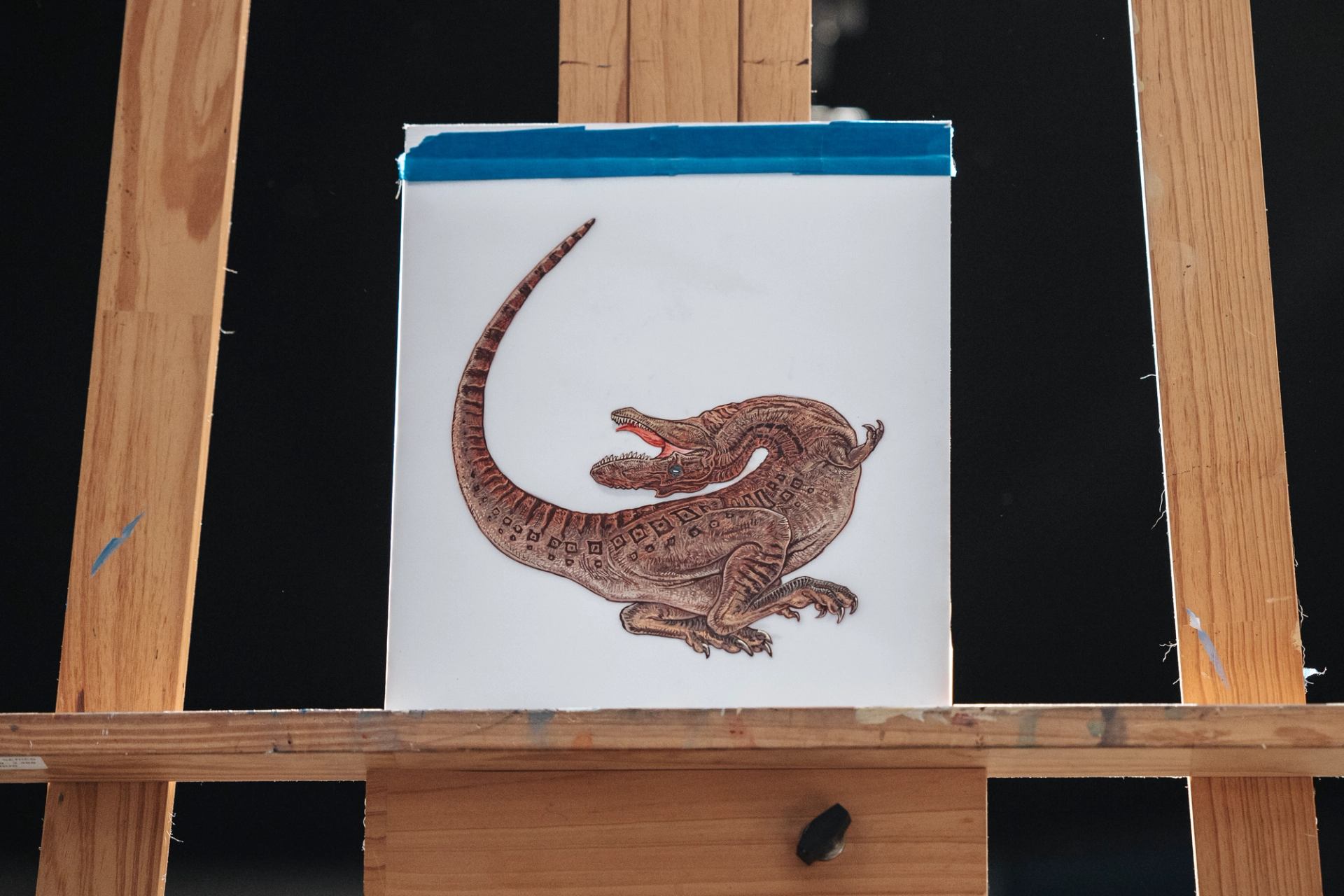
Ornithomimus
Record: The best-preserved ornithomimid dinosaur ever found
If you’re unfamiliar with this dinosaur species, think of them as “ostrich-mimic dinosaurs.” This near-complete skeleton only has a few small finger and toe bones missing, making it an incredibly rare find. The Ornithomimus is preserved in the same “death pose” as the Gorgosaurus mentioned above. Its bones, which were discovered in 1995 in fossil-rich Dinosaur Provincial Park, had been undisturbed for more than 76 million years and had been well-preserved thanks to being encased in sandstone. This record holder is currently off display at the Royal Tyrrell Museum for research, but you can still see other ornithomimid specimens there.
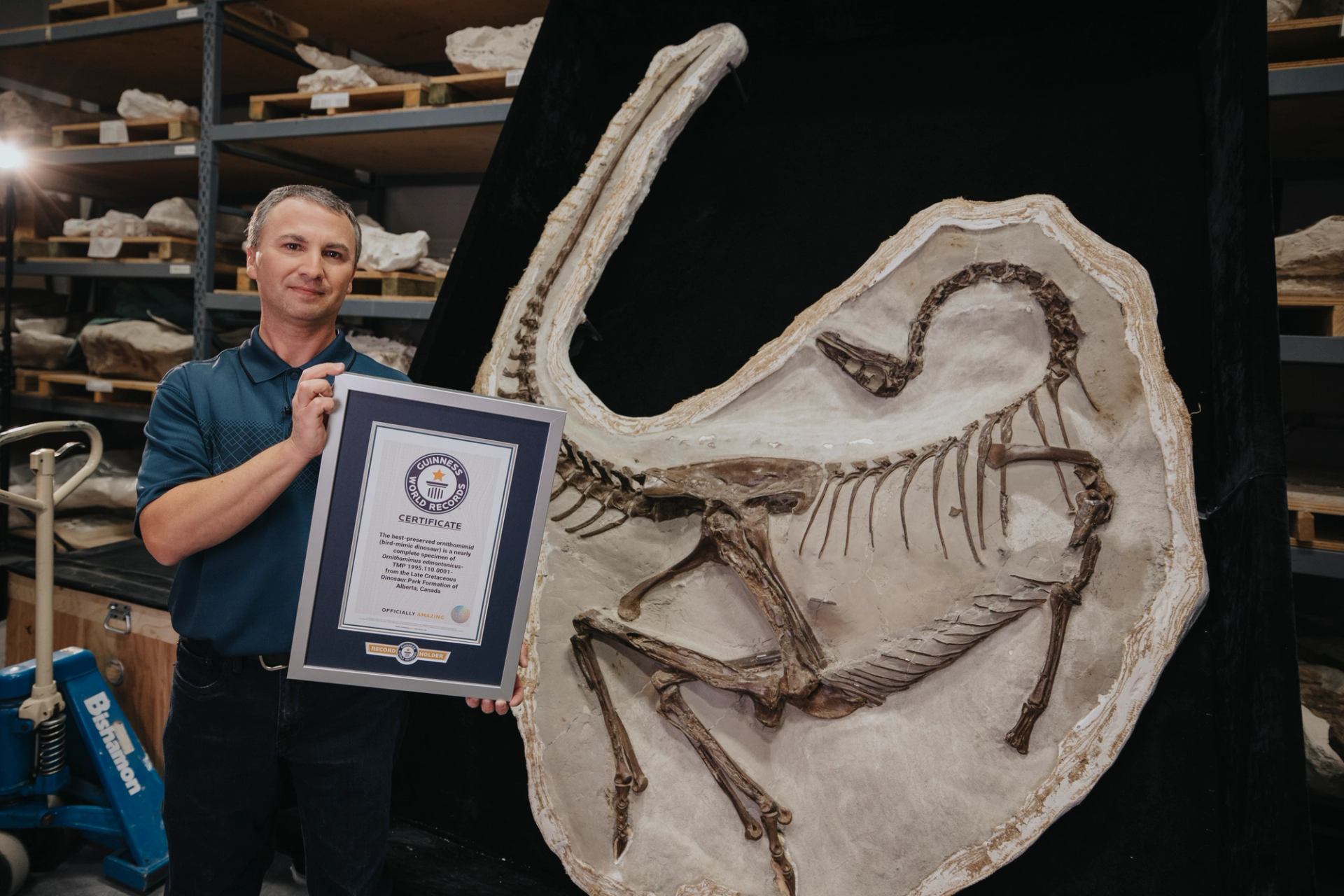
Like ostriches, the Ornithomimus couldn’t fly, so scientists are unsure of the purpose of its wings. They may have been used to intimidate predators or simply help the dinosaur court a potential mate.

Borealopelta markmitchelli
Record: The best-preserved armoured dinosaur in the world
The discovery of Borealopelta markmitchelli was a happy accident. In 2011, a shovel operator at the Suncor Millennium mine in Fort McMurray came across some rocks that had a strange polka-dot pattern on them. He and his supervisor recognized the pattern as fossil bone and told the Royal Tyrrell Museum about their discovery. It turns out that those polka-dot shapes were, in fact, the remains of the dinosaur’s bony armour.
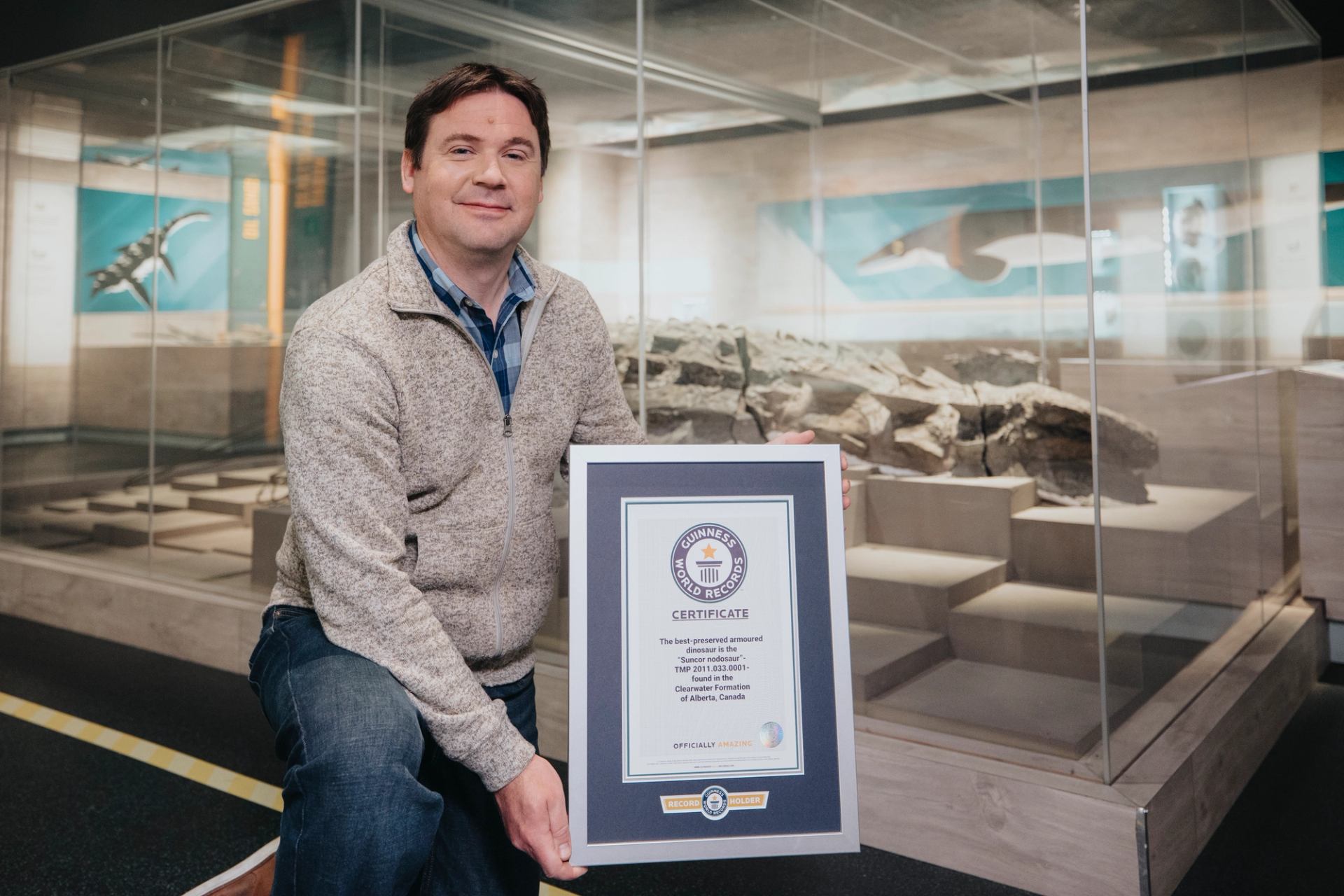
Once the rock encasing the fossil was brought back to the Royal Tyrrell Museum, it took a staggering 7,000 hours over five-and-a-half years to prepare the dinosaur. The Borealopelta markmitchelli was so well-preserved because it was quickly buried in mud. Even its stomach contents were preserved, which contained 48 different plant fossils. The Borealopelta lived around 110 million years ago and has the distinction of being one of the oldest named dinosaurs in Alberta. of the dinosaur’s bony armour.
